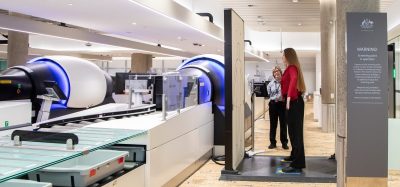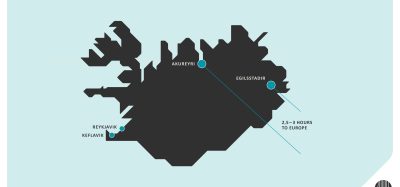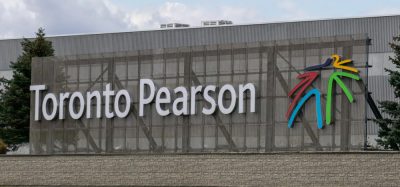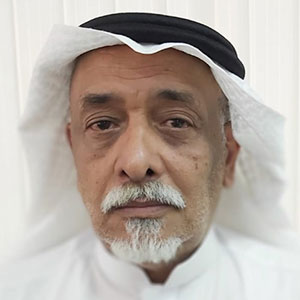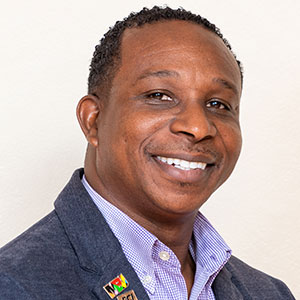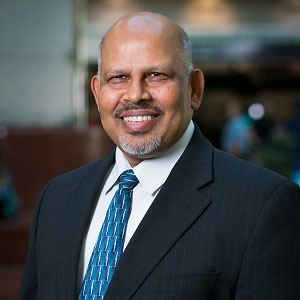Delivering a gold medal performance for Queensland and Australia: An interview with Brisbane Airport CEO, Gert-Jan de Graaff
Posted: 2 June 2025 | Gert-Jan de Graaff | No comments yet
Gert-Jan de Graaff, CEO of Brisbane Airport Corporation Pty, tells International Airport Review why his staff won best airport staff in Australia & Pacific at the 2025 World Airport Awards, how they are preparing for hydrogen and the 2032 summer Olympics, plus why he’ll never talk publicly about 2019 numbers ever again.
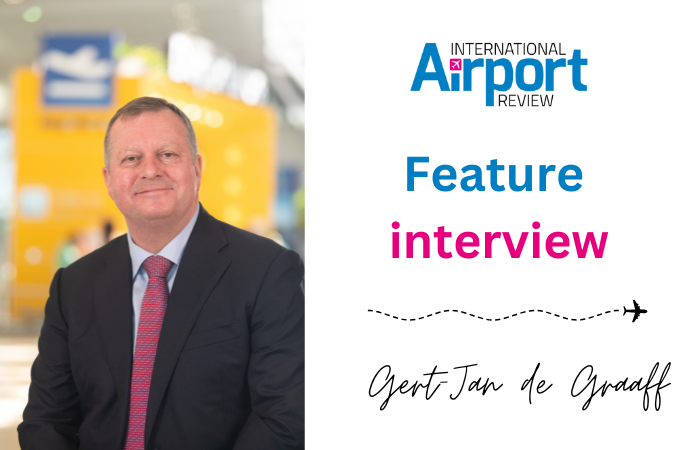

Congratulations on having officially returned to 100% of pre-COVID passenger numbers as your international terminal recorded its two busiest months on record over December and January 2025. What has been the key to this success?
We always said we wanted to build back better, a stronger network, connecting Brisbane and Queensland to the world.
None of us in this industry will ever forget the days of our international terminal empty – there were 13 days with zero passengers. So to see these record-breaking numbers in December and January is fantastic news. And we know we have a very strong year ahead as we continue to consolidate our network.
Recently Malaysia Airlines has announced it will return to Brisbane from November 2025. Kuala Lumpur is the 33rd destination on Brisbane’s international network map, matching our pre-pandemic number for the first time, so it’s a milestone moment.
Join us live: Shaping the Next Generation of Hold Baggage and Air Cargo Screening
Join us live for an insightful webinar on 11th December at 14:00 GMT, in collaboration with Smiths Detection, as we explore the strategic balance of operational efficiency, regulatory compliance, and sustainability in high-volume security environments.
This session offers a focused look into future-proofing your security strategy.
Key learning points
- Cost Reduction: Strategies to minimize bag travel time while simultaneously reducing operational costs.
- Regulatory Roadmap: Insights into the next wave of regulatory changes and their impact on future investment decisions.
- Sustainable Systems: Practical approaches to building sustainability into security systems and lowering the total cost of ownership (TCO).
- Scalable Solutions: Real-world examples of scalable systems supporting current airport growth and preparing for tomorrow.
Register now for expert insights, case studies, and actionable strategies on operational efficiency!
You’ve said that this is a line in the sand moment and that you will never talk publicly about 2019 numbers ever again, what lessons learned will you be taking forward with you now?
It is a line in the sand, because we have to be focused on the future.
Yes, the recovery took a lot longer than some people expected. I’ve got to say, it happened roughly when I thought it would. But now we’re here, there’s no value comparing our performance to 2019 any longer. I’ve told my teams, moving forward we compare ourselves year-on-year. It’s how it’s always been done, and it’s time we are not shackled by the distant past, but very focused on delivering for our customers, our airlines, the community and shareholders for the future.
Brisbane Airport recently won the top award for the best airport staff in Australia & Pacific at the 2025 World Airport Awards. What environment do you create for BNE employees?
We are incredibly happy that travellers from around the world have recognised the hard-working and passionate Brisbane Airport team.
Our philosophy is simple: ‘Don’t worry, be happy,’ and that truly reflects our aim for all travellers.
There are more than 20,000 people working at Brisbane Airport, and we expect that number to grow by 10,000 by the time the Brisbane 2032 Olympic and Paralympic Games are here.
As for our environment, our values are shaped by collaboration, communication, courage and care, and it’s the driving force behind our growing BNE or Brisbane Airport team.
The Australian Competition and Consumer Commission recently reported that Australia’s four largest airports including Brisbane made their highest ever aeronautical revenues in 2023-24 despite handling fewer passengers than before the pandemic. What are your thoughts on this report?
The ACCC report is an important part of our competition framework in Australia. A lot of our passenger growth has come from international passenger movements, which drive higher revenues. We’ve worked hard to rebuild our connections to key international destinations. The good news from the ACCC report is that it acknowledges our extensive investment in the passenger experience and our consistently strong passenger satisfaction ratings.
What do you think the market (or the regulator, for that matter) gets wrong about your business?
We know that the regulator never gets it wrong.
Airports are an extremely complex business, with multiple participants working together to support the passenger journey.
The public may not realise airports do not directly control all aspects of a passenger’s journey, including check-in, baggage handling and air traffic control. These aspects are handled by the airlines or a separate government authority. Other aspects of airport operations are directly affected by government requirements, with particular reference to security screening.
Our challenge is to work efficiently with all parties to provide a seamless passenger journey. Our record investment in security, terminal fit out and baggage systems are all focused on working with our partners to deliver a better passenger experience.
Your airport was recently the host of a hydrogen-electric aviation breakthrough when Stralis Aircraft completed a propellor spin test. What role do you see Australia playing in the production of sustainable aviation fuels and hydrogen?
We are incredibly proud to have supported Stralis and the Hydrogen Flight Alliance with the first hydrogen spin test at the airport. This partnership has provided us with crucial insights into preparing for hydrogen technology at the airport, presenting a significant opportunity for us. Stralis anticipates that their aircraft will be capable of travelling up to 800km, potentially enabling approximately 49% of Brisbane Airport’s domestic travel to be zero-emission in the future.
Stralis anticipates that their aircraft will be capable of travelling up to 800km, potentially enabling approximately 49% of Brisbane Airport’s domestic travel to be zero-emission in the future.
It is incredibly important for Australia to be a leader in this area because from here, almost anywhere in the world is a long-haul flight. And even domestically, aviation is essential, unlike Europe which has highly developed rail networks.
One thing we have discovered at Brisbane Airport is that collaboration is the only way we can tackle these challenges. Companies are wanting to trial and test here at Brisbane Airport because our teams understand how important finding new solutions are.
In January this year, you became the first airport in Australia to achieve net zero emissions for scope 1 and 2, congratulations! Passengers now travelling through the airport will do so using 100% renewable-backed electricity generation – do the passengers themselves know this? How have you made them aware?
The moment you step into Brisbane Airport the digital signs are up everywhere, and it’s been that way since 1 January this year.
It’s a message that has been very well received and one that we know matters to many travellers, and they’re part of this sustainability journey with us.
They can know that every part of their journey through Brisbane Airport, from the electricity powering the computers at check-in, the luggage systems, the air conditioning, security equipment… and then right through to the lights on the runway, are powered by renewable-backed energy.
How was net zero achieved and what is next on your sustainability journey?
Well, it didn’t happen overnight, let me tell you!
We achieved our target for net zero (scope 1 and 2) in 2025 by reducing this footprint by 97%. We did this by:
- Signing a power purchase agreement for 100% renewable-backed electricity from wind farm and solar projects
- Expanding onsite solar with 6MW onsite to date and a further 5MW underway
- Replacing 24 traditional internal combustion engine fleet vehicles with electric powered vehicles.
The remaining 3% of emissions within our control that we have been unable to eliminate from our operations are removed using a high environmental quality offset project purchased through Tasman Environmental Markets. The carbon offset project Brisbane Airport is a native bush regeneration project, located in southwest Queensland.
How are you working to reduce your scope 3 emissions?
We recognise that our scope 1 and 2 emissions constitute just 1% of our total carbon footprint, while scope 3 emissions account for the remaining 99%.
We have just installed 40 airside chargers to support the electrification of ground servicing equipment, and we’re adding another 10 this year. We have also begun using low-carbon materials in our construction projects, with our recent car park expansion utilising lower-carbon concrete for approximately 80% of the structure.
Additionally, our renewable Power Purchase Agreement (PPA) is available to our on-airport customers to aid in their transition to sustainable energy. We have also implemented an offset programme for passengers who park at BNE, matching every offset purchased.
We understand that the real challenge lies with scope 3 emissions, and our focus is on identifying key reduction opportunities and collaborating with our partners to implement them.
We have been an active and proud member of the Federal Government’s Jet Zero Council which brings together representatives from across the aviation sector and its supply chains to lead efforts to deliver net zero aviation in Australia. The council provides advice to Government on issues related to the aviation industry’s transition to net zero emissions, so opportunities for a policy environment to support domestic SAF production and supply are a priority for the Council.
Australia plays a pivotal role in the production of sustainable aviation fuels (SAF) and hydrogen, thanks to its vast and diverse agricultural feedstocks and strong commitment to renewable energy. The country is well-positioned to lead in SAF and hydrogen production, with ongoing efforts expected to enhance energy security and create substantial employment opportunities.
It’s been sobering to see the tropical cyclone that hit Queensland and New South Wales recently. What features are you building into your infrastructure and resilience plans to build resilience for climate change?
The recent tropical cyclone event in Queensland has been a clear reminder of the increasing frequency and severity of weather events due to climate change.
The aerodrome remained open, however airline partners cancelled 1,364 flights from the afternoon of 6 March to 8 March. Resumption of airline operations recommenced on 9 March.
To ensure that we remain resilient to the impacts of climate change we are investing in multiple resilience measures including:
- Adaptation planning informed by our risk assessments on climate impacts
- Increasing the minimum design levels for our critical infrastructure to ensure they remain operational
- Focusing on sustainable design principles in all new construction projects.
But it also means being prepared for these events and well prepared for rapid recovery once they pass. We saw that with Cyclone Alfred, we were able keep the airport open and operational, and that’s something our teams can be proud of.
What are you most looking forward to this year?
It’s our birthday! We celebrate 100 years of Brisbane Airport all year. We’ve come a long way in a century.
We recently ran a competition and it was amazing to see hundreds of travellers share their photos and stories from decades of travel with us.
I think in aviation it is very easy to get caught up in numbers, and facts and figures about aircraft, and forecasts… And we forget, that behind every passenger there’s a story, there’s a connection, and that’s why aviation is an incredible industry to be part of.
Brisbane will be hosting the 2032 Summer Olympics, what preparations are you making in the areas of airport experience, construction, training, workforce and so on?
We have over seven years until the 2032 Olympic and Paralympic Games open in Brisbane, and planning is underway.
Our focus currently is on learning everything that we can from our partner airports who’ve hosted previous games and so we’ve been talking to cities all the way back to Sydney 2000 so we take the best lessons forward.
We’re also working closely with Los Angeles Airport given they are the next cab off the rank.
This will be a transformational event for Brisbane and we are very aware our airport will be the first hello and the last goodbye for those who visit, and we want to deliver a gold medal performance for Queensland and Australia.


In addition to his role with Brisbane Airport Corporation, Mr de Graaff also holds several current Board positions, including: Director and Secretary Treasurer on the Airports Council International Asia-Pacific and Middle East Regional Board; Director on Airports Council International World Governing Board; Director on the Australian Airports Association Board; Director on Tourism and Events Queensland Board and a Member of the Australian Jet Zero Council.
Mr de Graaff has more than 30 years’ experience in leadership roles at major airports around the world. He started his career in airport management in 1995 with Amsterdam Airport Schiphol in the Netherlands where he had management positions in the commercial, finance and strategic departments.
In 2005, Mr de Graaff was appointed as Managing Director of ASDC AB, the Company that manages and develops the commercial activities in the terminals of Stockholm-Arlanda Airport in Sweden.
Between 2007 and 2012, Mr de Graaff held senior roles with Brisbane Airport Corporation Pty Ltd, including Executive General Manager Commercial Services and Executive General Manager Strategic Planning & Development.
Prior to his return to Brisbane Airport in 2018, Mr de Graaff lead the bid for Galeão / Rio de Janeiro Airport in Brazil on behalf of Royal Schiphol Group and his most recent position was President & CEO of JFKIAT LLC, the private operators of Terminal 4 at John F Kennedy International Airport since 2014.
Previous Board appointments include the position of Chair of Airport Coordination Netherlands, and Board Memberships with Airports Council International North America (WBP), Air Cargo Netherlands, Cargonaut BV, Member of the Australian Border Force Customs Advisory Board and several tourism and investment attraction agencies.
Join our free webinar: Transforming Airport Security – Innovation, Impact, and the Passenger Experience
The landscape of airport security is undergoing a profound transformation, driven by evolving threats, technology, and passenger expectations. This webinar focuses on how AtkinsRéalis has been transforming security processes at some of the world’s busiest airports with smarter, more adaptive solutions.
Date: 4 Nov | Time: 14:00 GMT
REGISTER NOW TO SECURE YOUR SPOT
Can’t attend live? No worries – register to receive the recording post-event.
Related topics
Emissions, Green energy, Hydrogen, Passenger experience and seamless travel, Passenger volumes, Route development, Sustainability, Sustainable Aviation Fuel (SAF), Sustainable development, Tourism, Workforce





